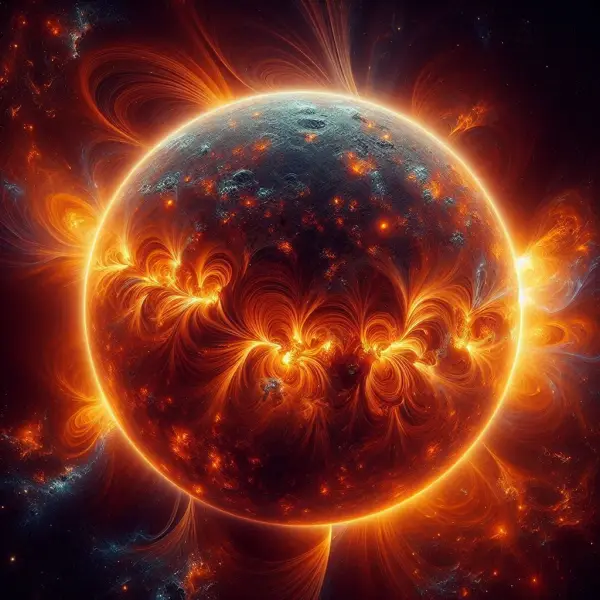Discover the Date the Sun Will Explode and Humanity Will Disappear
Discover when the Sun will explode and humanity will come to an end, according to AI. Ancient predictions about extinction on Earth and its possible causes....
Table of Contents
- The Ancestral Fascination with the Sun
- The Life Cycle of the Sun
- The Transformation into a Red Giant
- Human Survival Scenarios
Follow Patricia Alegsa on Pinterest!
markdown
The Ancestral Fascination with the Sun
Desde ancient times, humanity has gazed at the Sun with a combination of admiration and reverence. This celestial body, essential for life, has been both a symbol of power and a reminder of our fragility.
Throughout the centuries, it has inspired myths and legends, but has also been the subject of scientific study. Today, thanks to advancements in astronomy and artificial intelligence (AI), we have a more precise understanding of its life cycle and the impact its disappearance will have on our planet.
The Sun, like all stars, goes through various stages throughout its existence. Currently, it is in the main sequence phase, where hydrogen fuses in its core, generating the energy that sustains life on Earth.
The Life Cycle of the Sun
The Sun, like all stars, goes through various stages throughout its existence. Currently, it is in the main sequence phase, where hydrogen fuses in its core, generating the energy that sustains life on Earth.
According to current projections, this stage of stability will last for about another 5 billion years. AI has been crucial in refining these stellar evolution models, integrating vast amounts of astronomical data to predict the Sun's future transformation into a red giant.
When the hydrogen in the core of the Sun runs out, it will begin its red giant phase, which will last approximately one billion years. During this period, the Sun will expand enormously, possibly engulfing the orbits of Mercury and Venus, and perhaps even Earth.
Faced with the inevitable fate of the Sun, humanity faces a monumental challenge: survival beyond our solar system. AI has been instrumental in exploring potential strategies, from developing technology to emigrate to other solar systems to "stellar colonization."
The Transformation into a Red Giant
When the hydrogen in the core of the Sun runs out, it will begin its red giant phase, which will last approximately one billion years. During this period, the Sun will expand enormously, possibly engulfing the orbits of Mercury and Venus, and perhaps even Earth.
This drastic change could begin in about 4.5 billion years, enveloping our planet in an atmosphere of intense heat and fire, which would mean the end of life as we know it.
Human Survival Scenarios
Faced with the inevitable fate of the Sun, humanity faces a monumental challenge: survival beyond our solar system. AI has been instrumental in exploring potential strategies, from developing technology to emigrate to other solar systems to "stellar colonization."
Although these ideas may sound like science fiction, they are taken seriously by the scientific community. As deep learning models improve, the margin of error in predictions decreases, bringing us closer to a more accurate understanding of when solar activity will cease.
Once the Sun becomes a white dwarf, its light emissions will be too weak to sustain life on habitable planets.
Subscribe to the free weekly horoscope
Aquarius Aries Cancer Capricorn Gemini Leo Libra Pisces Sagittarius Scorpio Taurus Virgo
I am Patricia Alegsa
I have been writing horoscope and self-help articles professionally for over 20 years.
Subscribe to the free weekly horoscope
Receive weekly in your email the horoscope and our new articles on love, family, work, dreams and more news. We do NOT send spam.
Astral and numerological analysis
-
 Discover your future, secret personality traits and how to improve in love, business and life in general
Discover your future, secret personality traits and how to improve in love, business and life in general
-
 Online Dream Interpreter: with artificial intelligence
Do you want to know what a dream you had means? Discover the power of understanding your dreams with our advanced online dream interpreter using artificial intelligence that responds to you in seconds.
Online Dream Interpreter: with artificial intelligence
Do you want to know what a dream you had means? Discover the power of understanding your dreams with our advanced online dream interpreter using artificial intelligence that responds to you in seconds.

















